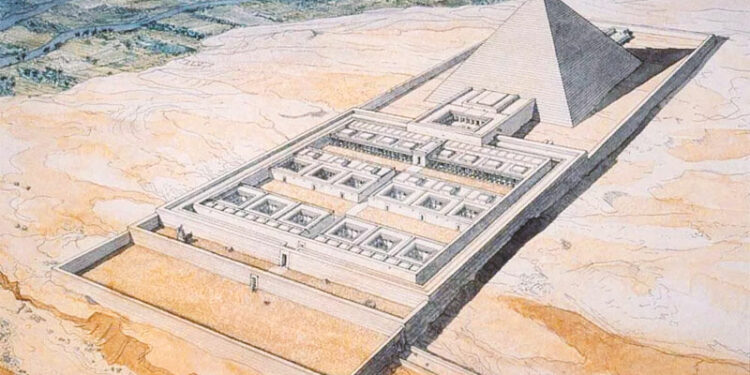Until nearly 2,500 years ago, there was a building in Egypt that, according to those who saw it, “surpassed the pyramids.” For thousands of years, the Great Labyrinth of Ancient Egypt remained only a legend, but archaeologists are now unearthing its lost history and the intriguing signs of its actual existence.
According to historical sources, the Great Labyrinth of Ancient Egypt was a massive structure with two stories and 3,000 distinct chambers, all incredibly connected by a maze of complicated corridors that no visitor could find their way out of without a guide.
At the bottom was an underground level that functioned as a king’s tomb, and at the top was a colossal roof fashioned of a single giant block of stone.
Herodotus’s Description

It was a place of bizarre traditions, plants, creatures, and irregular topography, but it was most notable for its architectural feats.
Many Egyptian wonders, including the vanished Great Labyrinth, were observed by Herodotus and recorded correctly in the second of nine volumes of his book “Histories,” written between 450 and 430 BC:
“I genuinely witnessed that, a work beyond words.” If one collected together all of the Greek structures and revealed their works, they would appear lesser, both in effort and size, near this labyrinth. Even the pyramids are beyond description, and each of them is comparable to the mighty achievements of the Greeks. The maze, on the other hand, outperforms even the pyramids.
It covers twelve blocks, six in a row facing north and six in a row facing south, with the gates on one side just in front of the gates on the other. The structure has two stories and three thousand rooms, half of which are underground and the other half directly above.

On the contrary, I viewed the higher chambers, and it’s difficult to believe they’re artificial. The complicated and perplexing routes from room to room and courtroom to court fascinated me as we moved from a courtyard to rooms, spaces to galleries, galleries to more rooms, and rooms to even more courtyards.
Each room, courtyard, and the gallery has a stone-walled roof. The walls are etched with images, and each square is elegantly built of white marble and flanked by columns.”
Since Herodotus visited Ancient Egypt’s famous Great Labyrinth about 2500 years ago, the tower has vanished into the mists of time, and its actual location has remained unknown.
Professor Flinders Petrie’s Discovery

In 1888, English academic Sir William Matthew Flinders Petrie claimed he had discovered the actual location of the Egyptian labyrinth at Hawara.
Only the original foundations survived from the labyrinth, allowing the size and direction of the structure to be approximated.
The Great Labyrinth would be approximately 304 meters long and 244 meters broad, large enough to contain the Karnak and Luxor temples.
No one has ever excavated or explored the site to this day. We won’t know if we’ve discovered one of Ancient Egypt’s most significant archaeological wonders until someone gets to the labyrinth.























